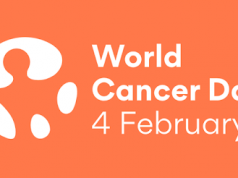 KUALA LUMPUR, May 28- Malaysia is among countries recording the lowest cases of death from cervical cancer with an average of 600 cases a year, according to the World Health Organisation.
KUALA LUMPUR, May 28- Malaysia is among countries recording the lowest cases of death from cervical cancer with an average of 600 cases a year, according to the World Health Organisation.
The report involved 50 nations, with India among the nations recording the highest number of deaths at 72,000, while Malaysia was 43rd and the second lowest in Asia after Australia (241 cases).
Health deputy director-general (Research and Technical Support) Datuk Dr Maimunah Abdul Hamid (photo) said Malaysia was among the earliest to introduce the human papillomavirus vaccine (HPV) to school students from the age of 13 to check the cancer.
“Now 95 per cent of school students have been immunised and we will seek to expand the immunisaiton programme to college students. We also cooperate with numerous ministries especially the Education and Women, Family and Community Development ministries for this prevention programme,” she said when met at the Global Forum on Cervical Cancer Prevention here, today.
 The four-day forum, starting today and organised by 30 international partners including the Malaysian Health Ministry, is to discuss issues related to cervical cancer to boost understanding of the disease.
The four-day forum, starting today and organised by 30 international partners including the Malaysian Health Ministry, is to discuss issues related to cervical cancer to boost understanding of the disease.
Dr Maimunah said there was a prevalent fear among women about undergoing Pap smear but the disease could be prevented and treated using the existing vaccines.
She suggested that women aged 20 years and above go for a Pap smear test every three years.
Meanwhile, the ministry’s Health Development Division director Dr Safurah Jaafar said the main challenges in the awareness campaign for cervical cancer were the refusal of some women to undergo health examination and the delay in getting cancer screening results.
She said the department implemented the ‘Call Recall’ system to remind women to turn up repeatedly for examination, invested more on laboratory technology to get speedy examination results, and boosted immunisation to a more comprehensive level.
“We target working women, those who stay in villages and the interior. In 2003, 43 per cent of women had the examination and we want to boost this to 80 per cent in the near future,” she added.
– BERNAMA










